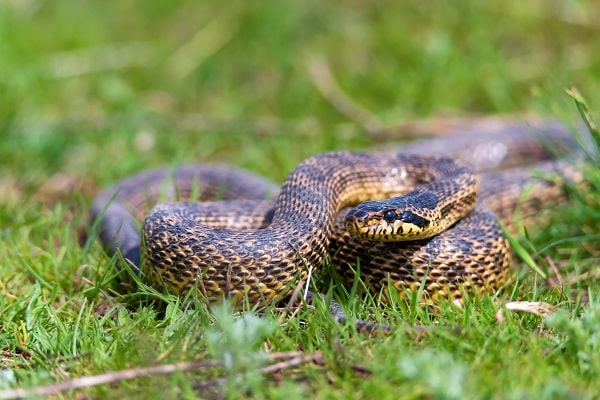Venomous snakes have been both feared and revered throughout history, their lethal potential concealed in sleek scales and powerful muscles. Often misunderstood, these creatures play a critical role in their ecosystems yet pose a significant threat if not properly identified and respected. Understanding the nature of venomous snakes, recognizing their distinguishing features, and comprehending the dangers they present are essential for any nature enthusiast, adventurer, or simply those living in snake-populated areas. In this comprehensive guide, you will delve into the fascinating world of venomous snakes, their identification, and the dangers they can pose to humans.
Contents
Unmasking Venomous Snakes

Venomous snakes, as the name implies, are species of snakes that produce a harmful secretion – venom, used primarily for immobilizing prey and for self-defense. Not all snakes are venomous, and the venomous varieties are particularly significant to humans due to the potential dangers they present. Venomous snakes are found all over the world, with the notable exception of a few islands and extreme cold regions. They are most diverse and numerous in warm tropical regions.
The ability to distinguish between venomous and non-venomous snakes can be life-saving. However, identification can be complex due to the incredible variety of snake species and the variability within the species themselves. Key identification factors often include coloration and patterns, the pupil’s shape, the scales’ structure, and the presence of certain physical features like heat-sensing pits or rattles.
Common Types of Venomous Snakes

Like any other species, snakes come in a variety of shapes, sizes, and colors. While some species are easy to recognize, others can be quite challenging to tell apart. Below you will learn about some of the most common and widespread venomous snakes found across the globe and how you can identify them:
Rattlesnakes

Rattlesnakes are a group of venomous snakes that are easily identifiable by the characteristic rattle on their tails, which they use as a warning signal when threatened. Their body coloration varies widely depending on the species, ranging from solid colors to intricate patterns of contrasting bands or diamonds. Most rattlesnakes have a triangular-shaped head, which is wider than their neck, and elliptical or cat-like pupils.
In terms of behavior, rattlesnakes are usually not aggressive unless provoked or cornered. Typically you will find them in habitats like deserts, prairies, and forests across the Americas. Some species prefer rocky areas and are often seen basking in the sun on a warm day. Rattlesnakes are also known for their heat-sensing pits between the eyes and nostrils, a trait shared by many other pit vipers that they use to detect warm-blooded prey.
Copperheads

Copperheads are medium-sized venomous snakes famous for their copper-red heads. These snakes are characterized by their distinctive hourglass-shaped crossbands on a body ranging from light brown to pinkish tan. Their eyes, similar to rattlesnakes, have vertical, cat-like pupils. Regarding behavior, copperheads are generally non-aggressive and tend to freeze when threatened instead of attacking.
However, if continually provoked, they will defend themselves. They can be found in various habitats, including forests, swamps, rocky areas, and even in suburban regions across the Eastern and Southern United States. Their ability to camouflage often results in unintentional encounters with humans.
Cottonmouths

Cottonmouth snakes, also known as water moccasins, are large venomous snakes recognized by their thick, heavy bodies and blocky heads. They are usually dark in color—shades of brown to black, often with darker crossbands. The name “cottonmouth” comes from the white tissue inside their mouths, which they display when threatened.
In terms of behavior, cottonmouths are semi-aquatic snakes found predominantly in the southeastern United States, typically near bodies of water such as lakes, streams, and marshes. They are often mistaken for non-venomous water snakes due to their similar habitats. Cottonmouths are generally more aggressive than copperheads and rattlesnakes and will stand their ground when confronted, making identification all the more critical.
Coral Snakes

Coral snakes are small, brightly colored, venomous snakes, easily identifiable by their distinctive pattern of red, yellow, and black bands. However, be aware that several non-venomous species mimic this coloration, leading to the rhyme: “red touches yellow, kills a fellow; red touches black, venom lack,” which refers to the sequence of the bands.
Coral snakes are quite secretive and are often found in woodland and marshy areas in the southern and western United States. They spend most of their time hidden underground or in leaf piles, so encounters with humans are rare. Coral snakes are in the same family as cobras, and while they are generally shy and not as quick to bite as vipers, their venom is highly potent, making their identification crucial.
Understanding Snake Venom

Snake venom is a highly specialized salivary secretion that serves primarily for prey immobilization and self-defense. It is a complex mixture of proteins and enzymes, which can have various effects, ranging from local tissue damage to systemic effects like blood clotting disruption or paralysis. Venom composition varies widely among snake species and can even vary within a single species based on factors such as diet, geography, and age of the snake.
Some venoms are mainly hemotoxic, meaning they affect the cardiovascular system and can cause tissue damage. This is the case for vipers, such as rattlesnakes, copperheads, and cottonmouths. Other venoms, like that of coral snakes, are primarily neurotoxic, affecting the nervous system and leading to symptoms like paralysis. Understanding the type of venom can play a crucial role in treating snake bites.
Dangers Posed By Venomous Snakes

The immediate effects of a venomous snakebite can vary greatly depending on the species of snake, the amount of venom injected, and the location of the bite. Symptoms can range from localized pain, swelling, and discoloration at the site of the bite to systemic effects such as nausea, weakness, difficulty breathing, and changes in heart rate.
While the long-term health implications also depend on the factors mentioned above, permanent tissue damage, infections, allergic reactions, loss of a limb, and in some extreme cases, death can occur if a snakebite is not promptly and correctly treated. Despite these dangers, it’s important to note that not all encounters with venomous snakes result in a bite, and not all bites result in envenomation.
First Aid For Snake Bites

If a snakebite occurs, there are some immediate steps to take. If possible, try to remain calm and keep the bitten area immobilized and at or below the level of the heart. Remove any jewelry or tight clothing before swelling starts, and try to remember the color and shape of the snake to help with treatment decisions.
Contrary to popular belief, you should never try to suck out the venom, cut around the bite, apply a tourniquet, or ice the wound, as these methods can cause more harm than good. Instead, call for emergency medical assistance immediately and wait for professionals to arrive.
Professional Medical Treatment For Snakebites

Seeking professional medical help promptly after a snakebite is crucial. Doctors can assess the severity of the bite, monitor vital signs, perform necessary tests, and administer antivenom if required. Antivenom, a medication created using snake venom, is the most effective treatment for venomous snakebites and can reverse most of the effects of the venom.
However, antivenom must be administered as soon as possible after the bite to be most effective. It’s also important to remember that different species of snakes have different antivenoms, so try to identify the snake or describe it to medical professionals as accurately as possible.
Prevention And Safety Measures

Avoiding snake bites is always better than treating them. Some tips to avoid snake encounters include being aware of your surroundings, especially in snake-prone areas, wearing appropriate clothing like long pants and boots when in such areas, and never attempting to handle a snake unless you are trained to do so.
At night, when some snakes are more active, always use a flashlight and avoid walking through tall grass or reaching into places where you cannot see. In case you live in a snake-prone area, make your home less attractive to snakes by keeping your yard tidy and removing potential hiding spots.
Be Aware Of Any Venomous Snakes You May Be In Contact With!
From the intricate patterns of a rattlesnake to the bright bands of a coral snake, venomous snakes can captivate you with their lethal beauty. Yet, a lack of knowledge about these creatures can turn a harmless encounter into a life-threatening situation. This guide aimed to equip you with vital knowledge on identifying venomous snakes, understanding their dangers, and ensuring safety. Remember, while these snakes command your respect, they should not inspire fear. Coexisting with these creatures means understanding them better, and that journey of understanding starts with education.


